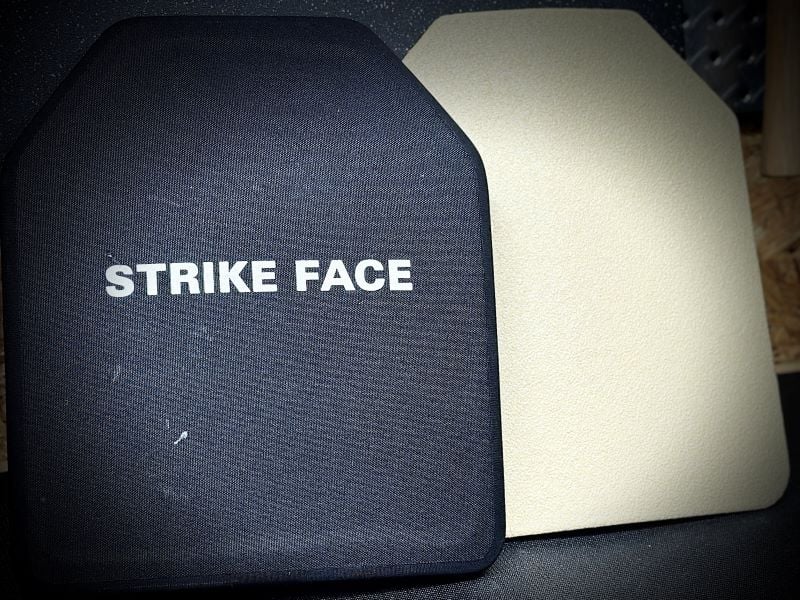Who doesn’t love the idea of being bulletproof? The idea of bullets bouncing off you sounds pretty dope to me. Sadly, none of us are Superman, Robocop, or a Terminator. We can’t be bulletproof, but body armor gets us pretty close. As close as you can reasonably be outside of an Abrams tank. Body armor is an interesting topic, that can be very deep. Today, we won’t dive too deep into the world of body armor, but we’ll talk all about why you should consider purchasing some.
What Exactly is Body Armor
You might be new here, and that’s good, great even. The term body armor could mean anything from heavy leather armor designed for medieval peasants fighting for their feudal lord to the modern body armor used by police and military. It might help new readers to better define exactly what we are talking about. When we talk about body armor, we mean bulletproof, or better yet, bullet-resistant armor.

Soft Armor
In general, soft armor is used to resist handguns and shotguns. There are outliers and types of handgun and shotgun ammo that can certainly punch through certain types of soft armor, though. Most police officers these days are wearing simple, soft armor because of its lightweight nature and protective design. Soft armor tends to be flexible and easy to wear. It’s much cooler in terms of temperature and easier to wear for those long shifts.

Hard Armor
Hard armor is where we typically get into rifle-resistant armor. Rifles are a big family of guns, and I don’t know of any wearable hard armor plate that can resist something like a .50 BMG. The current highest standard of armor is capable of resisting .30-06 M2 Armor Piercing rounds. That’s pretty standard for body armor, and most will be able to resist the most popular intermediate calibers without much effort.

Why You Should Own Soft Armor
Why should you own body armor? There are several reasons why it should be part of your kit. Let’s start with the reasons why you should consider purchasing soft armor.
Soft armor is often more practical for people who are looking for armor they can wear daily. It’s lightweight, moves pretty easily, and can be easily concealed. Soft armor is great for people with jobs that can be somewhat dangerous. This includes tow truck drivers, repo men, cash couriers, and even security guards who aren’t supplied with armor. Additionally, anyone who has been seriously threatened can wear body armor for an added layer of protection in daily life.

Why You Should Own Hard Armor
While I do believe soft armor is very usable and handy for specific jobs and situations, I don’t think everyone needs soft armor. I do believe that everyone should invest in quality hard armor. For the average Joe, wearing armor is not something you’d typically do, and if you have to turn to armor, you are facing a grave and extreme situation.
In a grave and extreme situation, you want hard armor. It’s more protective, durable, and usable. The average person needs hard armor because it’s a life-saving piece of gear. And it helps you to be a little more bullet-resistant. That’s the biggest reason.

I also believe in the idea of being an American Minute Man. Further, I believe that everyone should be skilled and equipped to be somewhat self-reliant. If you’re self-reliant, then you can help others or free up resources so that others can be rescued. Body armor is just part of that equation.
It’s a life-saving piece of gear and one that’s great to have on hand. A good plate carrier is an excellent way to mount your gear, so carrying extra mags, an IFAK, and more is easy.
What Kind of Body Armor
We covered soft and hard armor, but let’s talk about what armor to get. First, when it comes to hard armor, you should ignore steel armor. Steel armor can stop bullets, but it also causes projectiles to spall and send portions of a metal bullet upward or downward into your vital areas. Hard, hot metal can strike your neck, legs, and more. Most of these are covered with an anti-spall coating, but truck liners shouldn’t be relied on to save your life.
The most common and affordable option is ceramic hard armor. I’m not talking about your grandmother’s prized ceramic dolls. Ceramic has been used for a very long time, and the armor isn’t just made from ceramic. Ceramic armor is often backed by a metal layer or a fiber-reinforced plastic composite layer. The ceramic absorbs and dissipates kinetic energy to keep bullets out of you.

The NIJ, or National Institute of Justice, is a part of the Department of Justice. They independently test and certify armor to stringent standards. With this certification, your plates are tested and approved. NIJ Certified is the phrase you want to see. Some companies will use NIJ Compliant and assert their plates are made to NIJ standards but are not tested by the NIJ.
You don’t want NIJ compliant, you want NIJ CERTIFIED!
Armored Up
Body armor is an extension of preparedness. Many of us own AR-15s with LPVOs, bright white lights, and night vision, which is a growing trend in the United States. As far as I’m concerned, all of those things fall into the same category as body armor. It’s just a part of being ready—ready for what? Anything.

